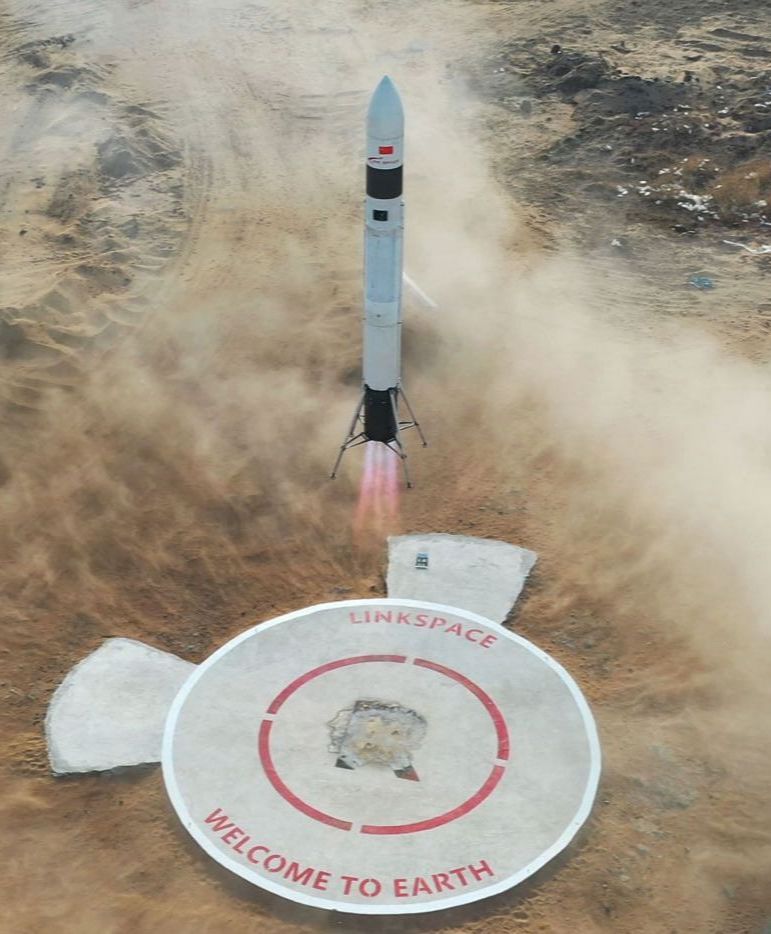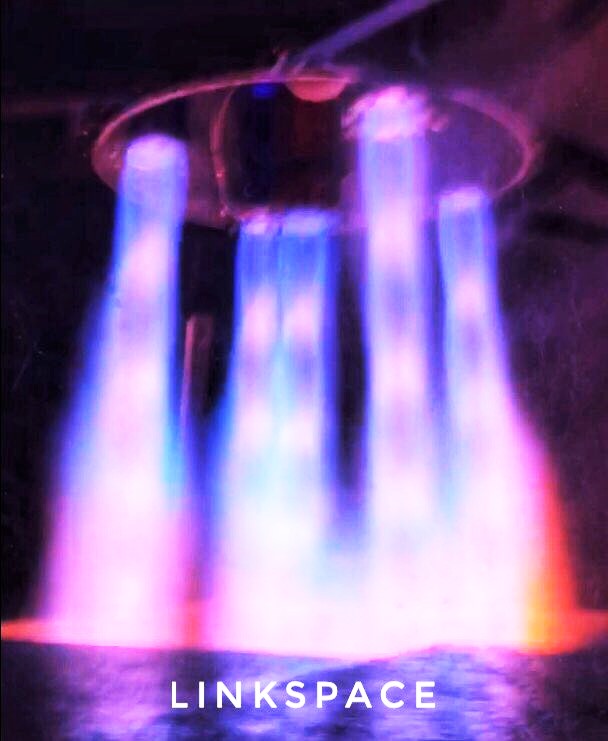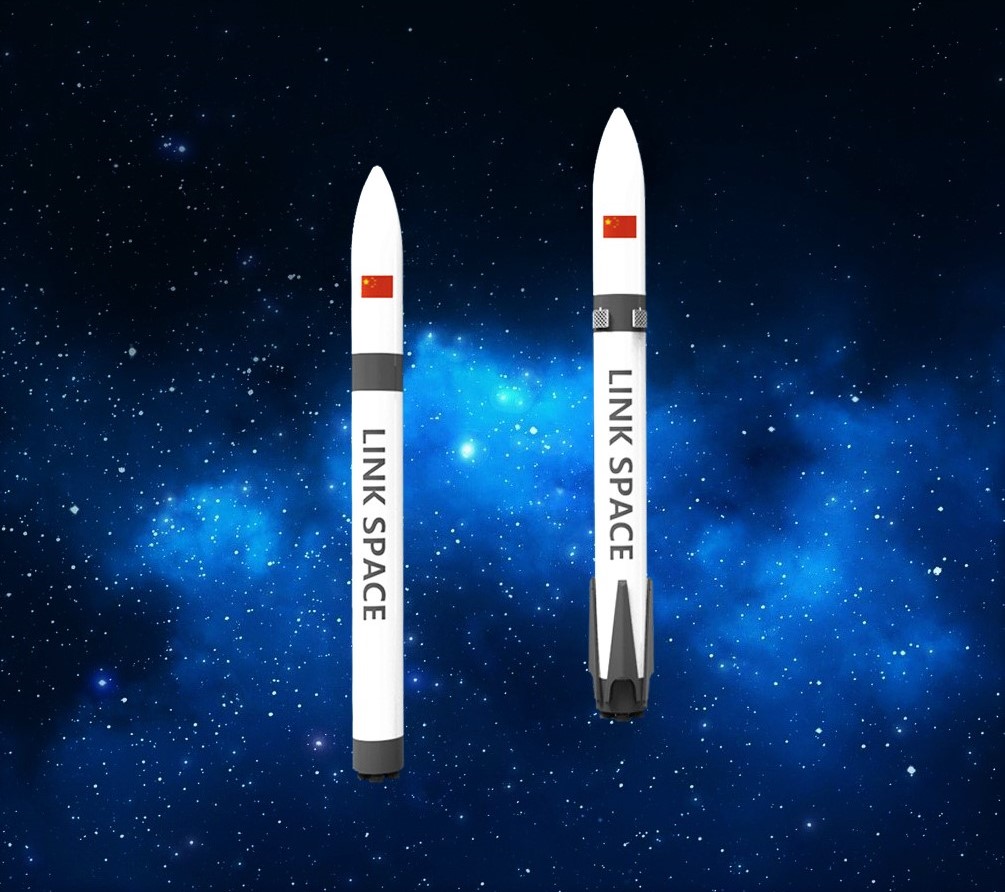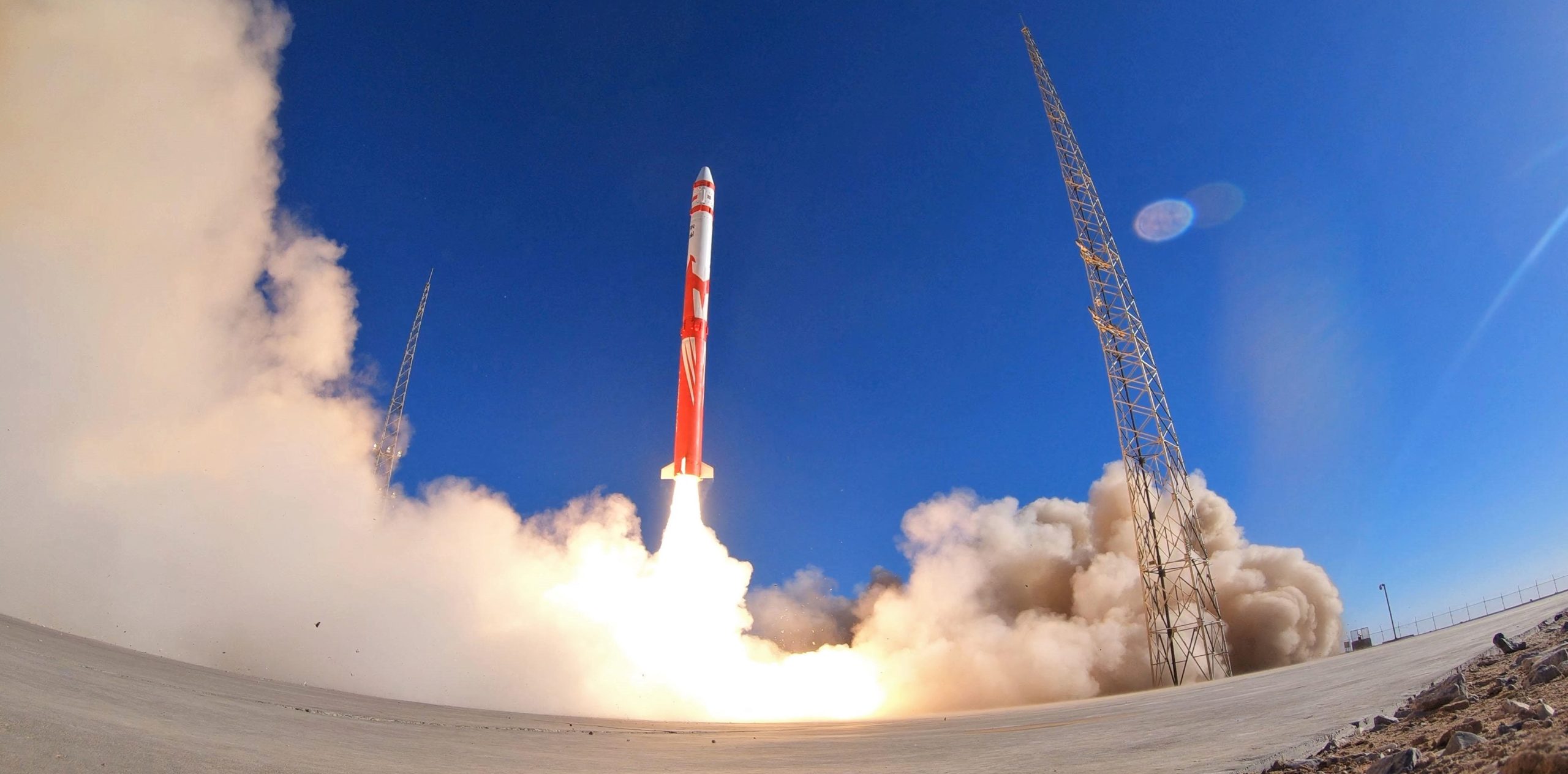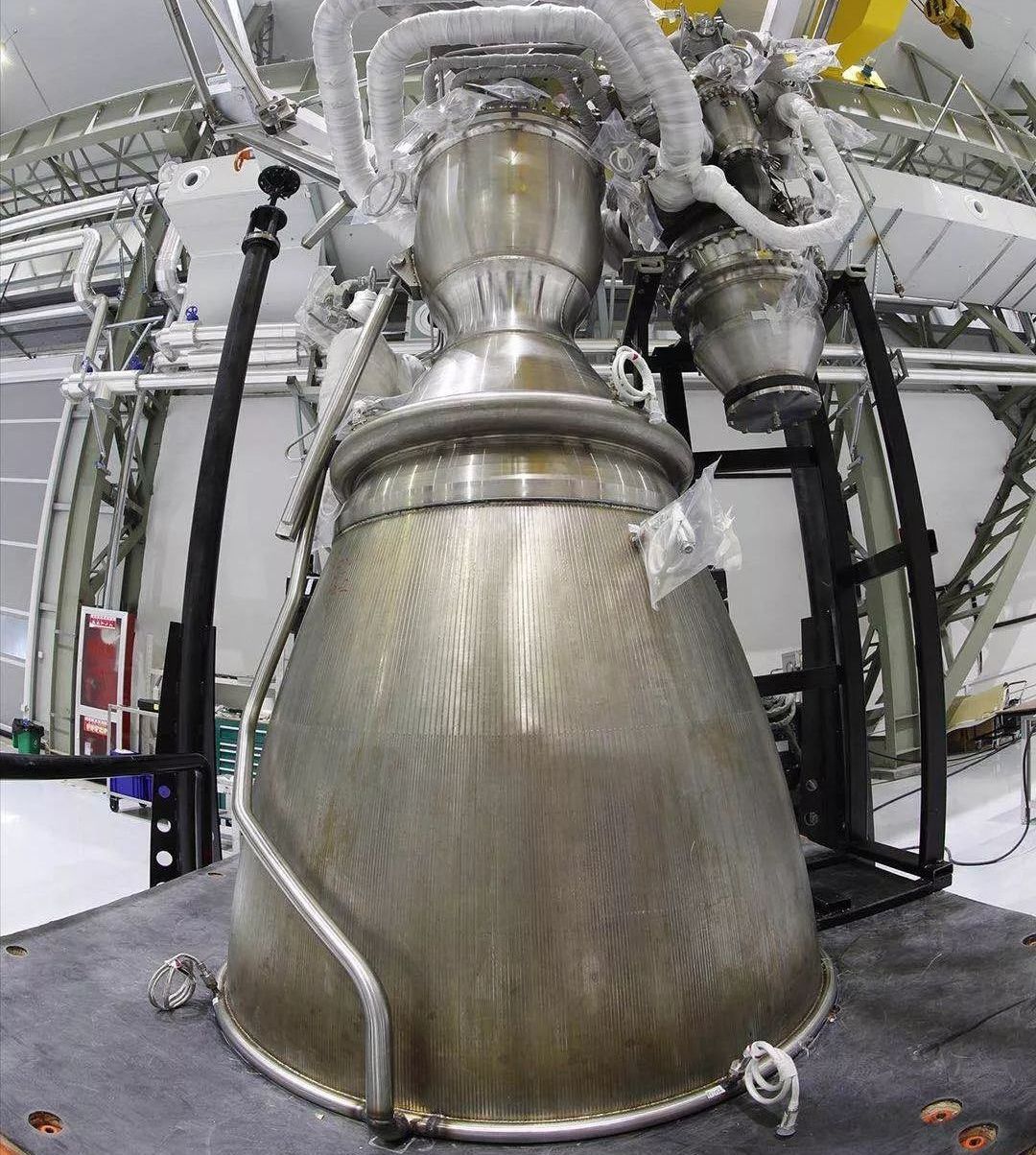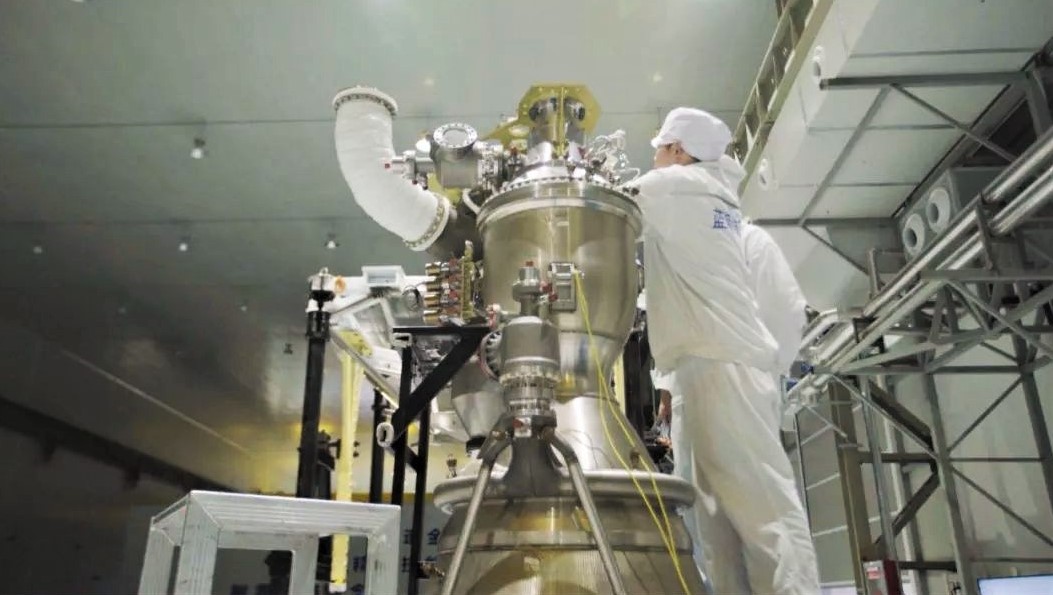News
DeepSpace: Chinese rocket startups make tangible progress on the path to orbital launch

In the last six or so months, a range of small Chinese rocket startups have begun to make serious progress in the nascent commercial industry, including several inaugural orbital launch attempts, extensive propulsion testing, and more. Rising above the fray are a handful of uniquely notable companies: Landspace, Linkspace, OneSpace, and iSpace (creative, I know).
While the names leave something lacking, several companies have truly impressive ambitions and can already point to major tech development programs as evidence for their follow-through. Linkspace is arguably the most interesting company with respect to what they are doing today, while Landspace has the ambition and expertise to build and launch some truly capable rockets in the near-term.
OneSpace & iSpace
- OneSpace recently made its first attempt at orbital launch after completing an OS-M1 rocket, nominally capable of placing 200 kg (450 lb) in a 300 km (190 mi) low Earth orbit (LEO). The March 2019 attempt failed 45 seconds into launch, likely caused by an improperly-installed gyroscope that guided the rocket in the wrong direction.
- This failure is by no means a bad thing. Reaching orbit on one’s first try is extraordinarily rare, particularly for private companies with no prior experience developing launch vehicles. SpaceX’s first three Falcon 1 launches failed before success was found on Flight 4. Rocket Lab’s Electron launch debut was forced to abort before reaching orbit due to faulty third-party communications equipment.
- OneSpace has several additional suborbital OS-X launches and may be able to attempt one additional OS-M1 orbital launch before the end of 2019.
- Down the road, the company wants to enhance its payload capabilities by adding additional solid rocket strap-on boosters to OS-M1 (designated M2 and M4). OS-M4 would be able to launch as much as 750 kg (1650 lb) into LEO.
- iSpace is in a similar boat. Its Hyperbola-1 rocket relies on three solid stages and a liquid fourth stage and is designed to place 300 kg (660 lb) into LEO. iSpace has plans to attempt the company’s first orbital launch as early as June 2019.
- Having already raised more than $100M in investment, iSpace also has strong backing for the development of its next-gen Hyperbola-2 rocket. The methalox-based vehicle will have a reusable booster capable of vertical landings and should be able to launch almost 2 tons to LEO. The rocket’s first launch is expected to occur no earlier than late 2020.



Linkspace
- In April 2019, Linkspace began flight-testing a sort of miniature version of SpaceX’s Falcon 9 Grasshopper testbed. Known as NewLine Baby, the small suborbital prototype is designed to improve the company’s technical familiarity with vertically landing orbital-class rocket boosters after missions. Thus far, hop testing has been a great success.
- Baby weighs 1.5 t (1100 lb), is 8.1m (27 ft) tall, and is powered by five liquid methane and oxygen (methalox) rocket engines.
- The company hopes to transfer the knowledge gained into NewLine-1, a partially reusable orbital-class rocket designed to place 200 kg in LEO. Linkspace could attempt their first orbital launch as early as 2021.
- The two-stage rocket’s booster would separate a few minutes into launch and attempt a vertical landing on a pad or boat, the same approach SpaceX has used with unprecedented success.
- The similarities with SpaceX’s Falcon 9 are honestly not the worst thing. SpaceX has no patent on vertically landing rockets and has never attempted to corner the industry. Copying a successful new paradigm is certainly better than doing nothing.
- (For the record, Blue Origin did the exact opposite and attempted to patent vertically landing rockets at sea in 2014, before the company had conducted a single serious launch and at the same time as SpaceX was already planning barge recoveries of Falcon 9 boosters.)
- One could even say that Linkspace and several other Chinese companies are actually doing better than industry heavyweights like ULA and Arianespace by simply embracing the new paradigm, as opposed to denial, pearl-clutching, and half-measure responses.
Landspace
- Finally, there is Landspace. Perhaps the most exciting company of the bunch, Landspace is developing a fairly large methalox launch vehicle named ZhuQue-2 (ZQ-2). Powered by several fairly large TQ-12 liquid rocket engines, ZQ-2 is designed to launch up to 4t (8800 lb) to an orbit of 200 km (120 mi) and would produce up to 2650 kN (600,000 lbf) of thrust at liftoff, about a third of SpaceX’s Falcon 9.
- The two-stage ZQ-2 is not currently being designed for reusability, but an upgraded three-stage variant (ZQ-2A) would feature a much larger payload fairing and improve payload performance to 200 km by 50%, from 4t to 6t.
- Landspace will attempt ZQ-2’s inaugural launch as early as 2020. Critically, the company is just completed the first full-scale prototype of the TQ-12 engine meant to power the rocket and could begin static fire tests just a month or two from now.
- Tianque-12 (TQ-12) is a fairly unique engine. Powered by liquid methane and oxygen (methalox), TQ-12 uses a gas-generator propulsion cycle and is designed to produce up to 80t (175,000 lbf) of thrust. In a sense, TQ-12 is basically a slightly less powerful methalox variant of SpaceX’s Merlin 1D engine.
- The fact that Landspace is already in a position to begin static fire tests of the engine powering its next-gen rocket bodes very well for the company’s future plans. At a minimum, it likely means that Landspace is much closer to offering multi-ton commercial launch services compared to its competitors.
- Aside from its next-gen ambitions, Landspace has also developed a much smaller three-stage rocket known as ZQ-1. Capable of launching up to 300 kg into LEO, ZQ-1 nearly reached orbit on its October 2018 launch debut, failing midway through its third-stage burn.
- For now, the Chinese launch startup scene is downright frenetic. The title of “first private Chinese company to reach orbit” has yet to be awarded, and more than half a dozen groups are practically racing to secure it.
Mission Updates:
- SpaceX’s CRS-17 Cargo Dragon spacecraft successfully rendezvoused and berthed with the ISS on May 6th.
- Potentially less than two weeks after the Falcon 9’s May 4th CRS-17 launch, SpaceX’s first dedicated Starlink mission is scheduled to occur as early as May 13th, although delays of a few days are likely.
- SpaceX’s second West Coast launch of 2019 – carrying Canada’s Radarsat Constellation – finally has an official launch date – June 11th. The mission will reuse Falcon 9 B1051.
- Falcon Heavy’s third launch remains tentatively scheduled no earlier than June 22nd.
Photo of the Week

Falcon 9 B1056 returned to dry ground less than 24 hours after launching CRS-17 and landing aboard drone ship Of Course I Still Love You (OCISLY). (Tom Cross)

Elon Musk
Starlink passes 9 million active customers just weeks after hitting 8 million
The milestone highlights the accelerating growth of Starlink, which has now been adding over 20,000 new users per day.

SpaceX’s Starlink satellite internet service has continued its rapid global expansion, surpassing 9 million active customers just weeks after crossing the 8 million mark.
The milestone highlights the accelerating growth of Starlink, which has now been adding over 20,000 new users per day.
9 million customers
In a post on X, SpaceX stated that Starlink now serves over 9 million active users across 155 countries, territories, and markets. The company reached 8 million customers in early November, meaning it added roughly 1 million subscribers in under seven weeks, or about 21,275 new users on average per day.
“Starlink is connecting more than 9M active customers with high-speed internet across 155 countries, territories, and many other markets,” Starlink wrote in a post on its official X account. SpaceX President Gwynne Shotwell also celebrated the milestone on X. “A huge thank you to all of our customers and congrats to the Starlink team for such an incredible product,” she wrote.
That growth rate reflects both rising demand for broadband in underserved regions and Starlink’s expanding satellite constellation, which now includes more than 9,000 low-Earth-orbit satellites designed to deliver high-speed, low-latency internet worldwide.
Starlink’s momentum
Starlink’s momentum has been building up. SpaceX reported 4.6 million Starlink customers in December 2024, followed by 7 million by August 2025, and 8 million customers in November. Independent data also suggests Starlink usage is rising sharply, with Cloudflare reporting that global web traffic from Starlink users more than doubled in 2025, as noted in an Insider report.
Starlink’s momentum is increasingly tied to SpaceX’s broader financial outlook. Elon Musk has said the satellite network is “by far” the company’s largest revenue driver, and reports suggest SpaceX may be positioning itself for an initial public offering as soon as next year, with valuations estimated as high as $1.5 trillion. Musk has also suggested in the past that Starlink could have its own IPO in the future.
News
NVIDIA Director of Robotics: Tesla FSD v14 is the first AI to pass the “Physical Turing Test”
After testing FSD v14, Fan stated that his experience with FSD felt magical at first, but it soon started to feel like a routine.

NVIDIA Director of Robotics Jim Fan has praised Tesla’s Full Self-Driving (Supervised) v14 as the first AI to pass what he described as a “Physical Turing Test.”
After testing FSD v14, Fan stated that his experience with FSD felt magical at first, but it soon started to feel like a routine. And just like smartphones today, removing it now would “actively hurt.”
Jim Fan’s hands-on FSD v14 impressions
Fan, a leading researcher in embodied AI who is currently solving Physical AI at NVIDIA and spearheading the company’s Project GR00T initiative, noted that he actually was late to the Tesla game. He was, however, one of the first to try out FSD v14.
“I was very late to own a Tesla but among the earliest to try out FSD v14. It’s perhaps the first time I experience an AI that passes the Physical Turing Test: after a long day at work, you press a button, lay back, and couldn’t tell if a neural net or a human drove you home,” Fan wrote in a post on X.
Fan added: “Despite knowing exactly how robot learning works, I still find it magical watching the steering wheel turn by itself. First it feels surreal, next it becomes routine. Then, like the smartphone, taking it away actively hurts. This is how humanity gets rewired and glued to god-like technologies.”
The Physical Turing Test
The original Turing Test was conceived by Alan Turing in 1950, and it was aimed at determining if a machine could exhibit behavior that is equivalent to or indistinguishable from a human. By focusing on text-based conversations, the original Turing Test set a high bar for natural language processing and machine learning.
This test has been passed by today’s large language models. However, the capability to converse in a humanlike manner is a completely different challenge from performing real-world problem-solving or physical interactions. Thus, Fan introduced the Physical Turing Test, which challenges AI systems to demonstrate intelligence through physical actions.
Based on Fan’s comments, Tesla has demonstrated these intelligent physical actions with FSD v14. Elon Musk agreed with the NVIDIA executive, stating in a post on X that with FSD v14, “you can sense the sentience maturing.” Musk also praised Tesla AI, calling it the best “real-world AI” today.
News
Tesla AI team burns the Christmas midnight oil by releasing FSD v14.2.2.1
The update was released just a day after FSD v14.2.2 started rolling out to customers.

Tesla is burning the midnight oil this Christmas, with the Tesla AI team quietly rolling out Full Self-Driving (Supervised) v14.2.2.1 just a day after FSD v14.2.2 started rolling out to customers.
Tesla owner shares insights on FSD v14.2.2.1
Longtime Tesla owner and FSD tester @BLKMDL3 shared some insights following several drives with FSD v14.2.2.1 in rainy Los Angeles conditions with standing water and faded lane lines. He reported zero steering hesitation or stutter, confident lane changes, and maneuvers executed with precision that evoked the performance of Tesla’s driverless Robotaxis in Austin.
Parking performance impressed, with most spots nailed perfectly, including tight, sharp turns, in single attempts without shaky steering. One minor offset happened only due to another vehicle that was parked over the line, which FSD accommodated by a few extra inches. In rain that typically erases road markings, FSD visualized lanes and turn lines better than humans, positioning itself flawlessly when entering new streets as well.
“Took it up a dark, wet, and twisty canyon road up and down the hill tonight and it went very well as to be expected. Stayed centered in the lane, kept speed well and gives a confidence inspiring steering feel where it handles these curvy roads better than the majority of human drivers,” the Tesla owner wrote in a post on X.
Tesla’s FSD v14.2.2 update
Just a day before FSD v14.2.2.1’s release, Tesla rolled out FSD v14.2.2, which was focused on smoother real-world performance, better obstacle awareness, and precise end-of-trip routing. According to the update’s release notes, FSD v14.2.2 upgrades the vision encoder neural network with higher resolution features, enhancing detection of emergency vehicles, road obstacles, and human gestures.
New Arrival Options also allowed users to select preferred drop-off styles, such as Parking Lot, Street, Driveway, Parking Garage, or Curbside, with the navigation pin automatically adjusting to the ideal spot. Other refinements include pulling over for emergency vehicles, real-time vision-based detours for blocked roads, improved gate and debris handling, and Speed Profiles for customized driving styles.
